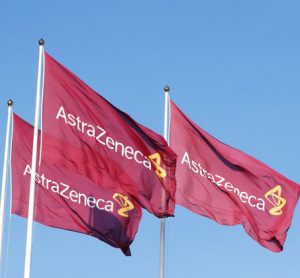Marketing Authorisation Application for olaparib accepted by European Medicines Agency
Posted: 27 September 2013 | | No comments yet
AstraZeneca today announced that the European Medicines Agency (EMA) has accepted its Marketing Authorisation Application (MAA) for olaparib…


AstraZeneca today announced that the European Medicines Agency (EMA) has accepted its Marketing Authorisation Application (MAA) for olaparib, an investigational poly ADP-ribose polymerase (PARP) inhibitor, for the maintenance treatment of patients with BRCA mutated platinum-sensitive relapsed serous ovarian cancer.
The MAA filing was based on Phase II study 19 data, a randomized, double-blind, placebo-controlled, phase II study, which evaluated maintenance treatment with olaparib 400 mg twice daily (n=136) versus placebo (n=129) in platinum-sensitive relapsed serous ovarian cancer patients who had received previous treatment with at least two platinum regimens and were in a maintained partial or complete response following their last platinum regimen. The primary endpoint was progression-free survival by Response Evaluation Criteria in Solid Tumors (RECIST) guidelines. Secondary endpoints included time to progression by CA-125 (GCIG criteria) or RECIST, overall survival and safety. A pre-defined subgroup analysis was conducted of patients who have BRCA mutations (n=136), which showed the treatment benefit of olaparib was greater in patients with BRCA mutated ovarian cancer.
Olaparib has the potential to be the first PARP inhibitor available for patients with BRCA mutated platinum-sensitive relapsed serous ovarian cancer.
About Olaparib
Olaparib is a potential first-in-class oral poly ADP-ribose polymerase (PARP) inhibitor that has been shown in pre-clinical models to exploit DNA repair pathway deficiencies to preferentially kill cancer cells. This mode of action gives olaparib the potential for activity in a range of tumour types with DNA repair deficiencies.
PARP is a key enzyme in one of the DNA repair pathways in human cells. Inhibition of PARP results in a build-up of DNA damage in the cell, requiring repair via an alternative pathway called Homologous Recombination repair (HR). Cancer cells that already have a deficient HR pathway (HRD) are limited in their ability to repair their DNA, overloading them with DNA damage and causing them to die. A number of abnormalities can cause HRD in cancer cells including BRCA gene mutations.
About ovarian cancer
Ovarian cancer is the eighth most commonly diagnosed cancer in women and the seventh leading cause of cancer death among women worldwide, mainly because it is often diagnosed late and has an extremely poor prognosis. For the 60% of ovarian cancer patients whose cancer has spread by the time of diagnosis, the five-year survival rate is less than 50%, so there is a real need for additional therapies beyond current standard of care, which is platinum-based chemotherapy.
Women with BRCA1 or BRCA2 mutations have an increased risk of developing ovarian cancer, and the course of their disease is similar to that of the overall patient population.




